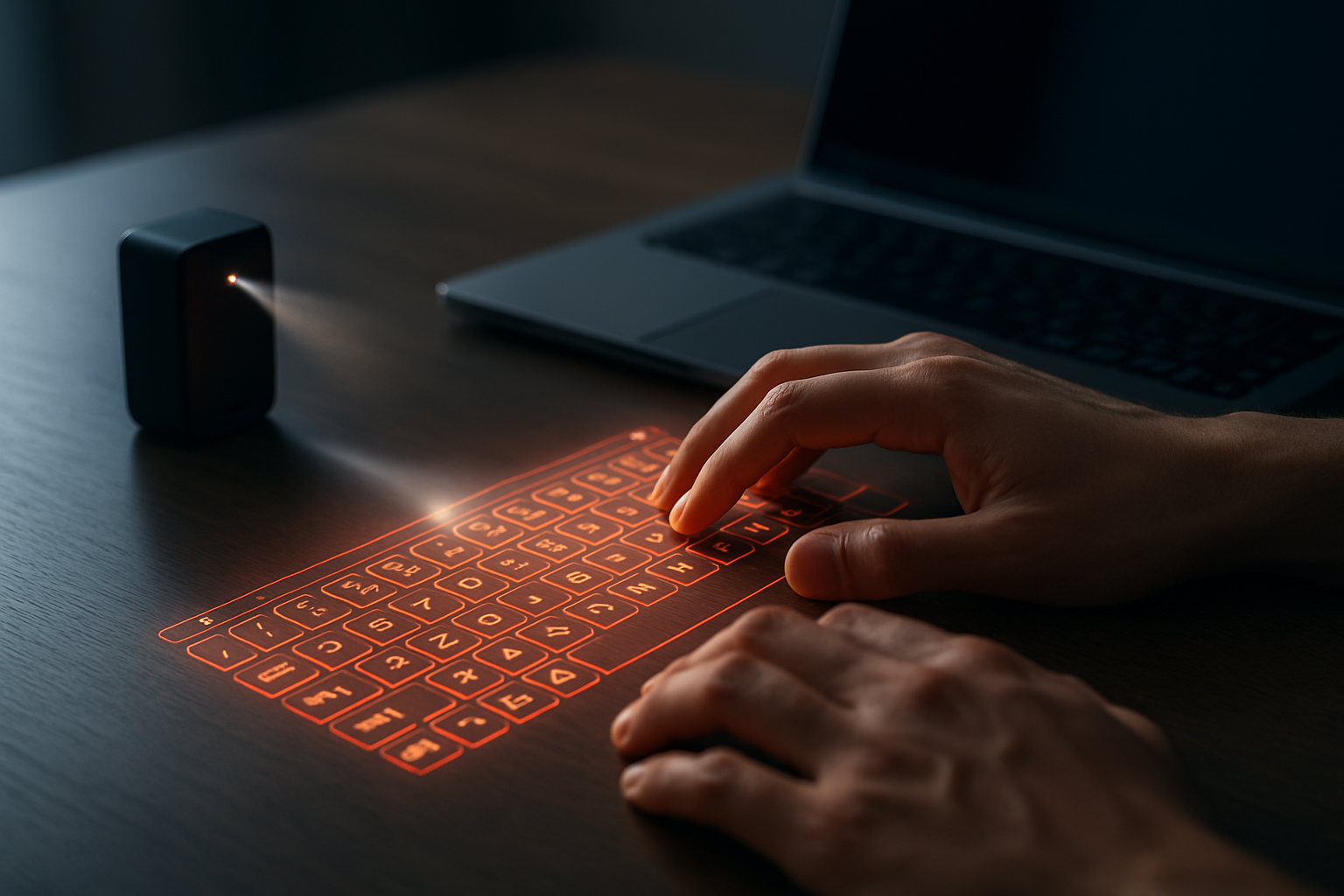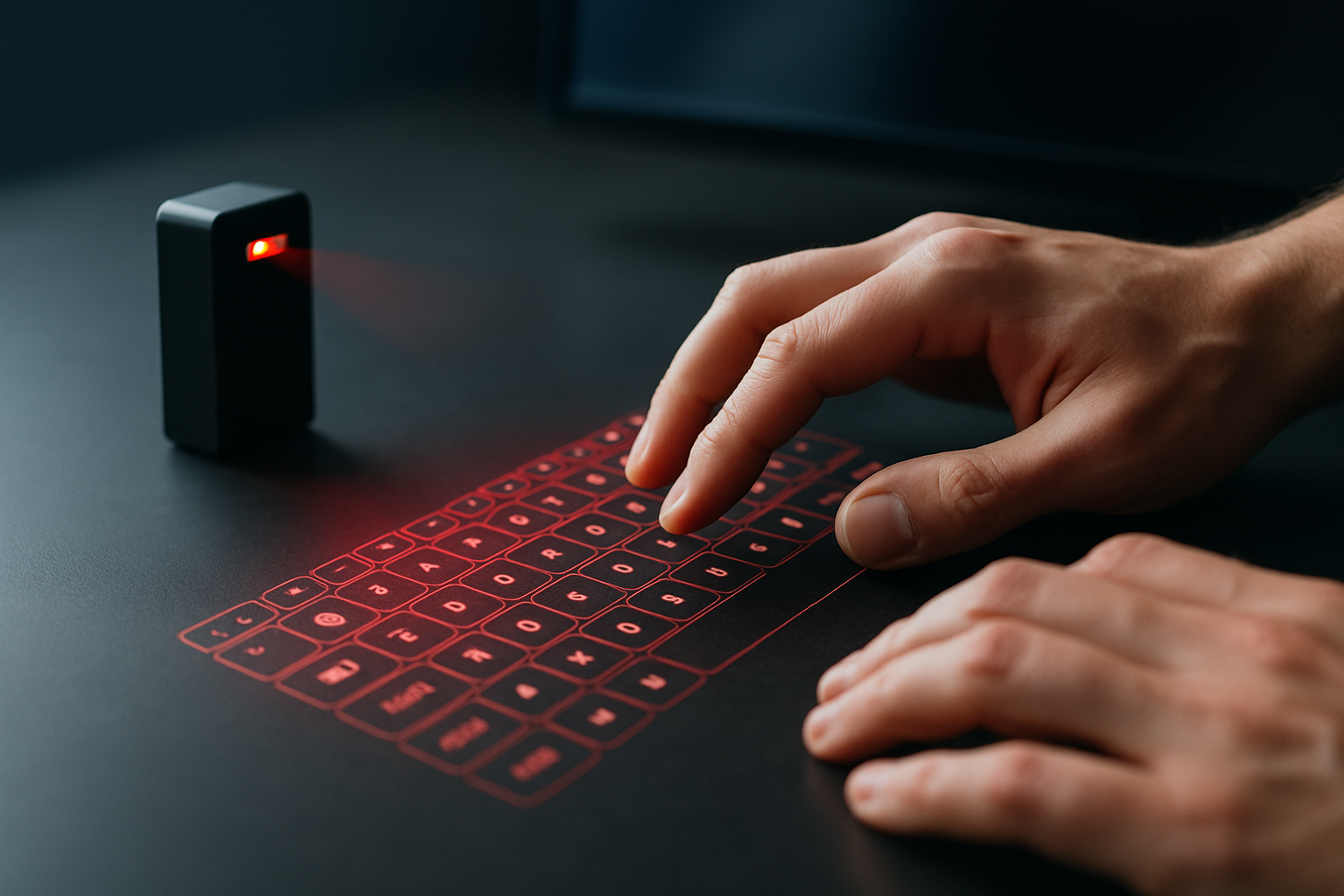Holographic Keyboards: The Next Step in Typing Evolution
In a world where technology continues to push boundaries, holographic keyboards are emerging as a futuristic solution to our typing needs. This cutting-edge input method promises to revolutionize how we interact with our devices, offering a blend of sci-fi aesthetics and practical functionality. As we delve into the realm of holographic keyboards, we'll explore their potential to reshape our digital experiences and the challenges they face in becoming mainstream.

At the heart of holographic keyboard systems are sophisticated projection units that cast a crisp, visible keyboard image onto a desk, table, or any suitable surface. These projectors use specialized lenses and light sources to create a clear, high-contrast display that’s visible even in varying lighting conditions. The projected keyboard typically mimics the layout of a standard QWERTY keyboard, complete with function keys and a number pad.
How holographic keyboards work
The magic of holographic keyboards lies in their ability to detect and interpret user input without physical contact. This feat is accomplished through a combination of technologies working in harmony. Infrared sensors create an invisible plane just above the projected keyboard image, detecting when a user’s fingers break this plane. Sophisticated algorithms then interpret these interruptions as keystrokes, mapping them to the corresponding keys on the virtual keyboard.
To enhance accuracy and reduce errors, many holographic keyboard systems employ machine learning algorithms that adapt to a user’s typing style over time. These AI-driven improvements can help distinguish between intentional keystrokes and accidental movements, leading to a more reliable typing experience. Some advanced models even incorporate haptic feedback mechanisms, using targeted sound waves or air puffs to simulate the tactile sensation of pressing physical keys.
The advantages of going holographic
Holographic keyboards offer several compelling advantages over their physical counterparts. Perhaps the most obvious benefit is their portability and space-saving design. Without the need for a physical keyboard, users can carry a full-sized input device in their pocket, projecting it onto any flat surface when needed. This flexibility is particularly appealing for mobile professionals and travelers who value lightweight, compact solutions.
Another significant advantage is the hygienic nature of holographic keyboards. With no physical keys to harbor bacteria or collect dust, these virtual interfaces can be a more sanitary option in shared environments or public spaces. This feature has gained increased attention in recent years, as awareness of hygiene in communal settings has grown.
Durability is yet another point in favor of holographic keyboards. Traditional keyboards are susceptible to wear and tear, with keys that can break, stick, or wear down over time. Holographic keyboards eliminate these mechanical failure points, potentially offering a longer lifespan and reduced maintenance needs.
Challenges and limitations
Despite their futuristic appeal, holographic keyboards face several challenges that have thus far limited their widespread adoption. One of the most significant hurdles is the lack of tactile feedback. Physical keyboards provide users with a sense of key location and activation through touch, which many find essential for accurate and comfortable typing. While some holographic keyboards attempt to simulate this feedback, the technology has yet to fully replicate the feel of physical keys.
Accuracy and responsiveness remain ongoing concerns for holographic keyboard technology. Environmental factors such as ambient light, surface texture, and hand positioning can all affect the system’s ability to detect keystrokes accurately. While advances in sensor technology and AI have improved performance, holographic keyboards still struggle to match the reliability of their physical counterparts, especially for touch typists and high-speed data entry.
Battery life is another consideration for portable holographic keyboard devices. The power requirements for projecting a visible keyboard image and constantly monitoring for input can be substantial, potentially limiting the usefulness of these devices in mobile scenarios without frequent recharging.
The future of holographic input
As technology continues to advance, the potential for holographic keyboards to overcome their current limitations grows. Researchers are exploring new methods of providing tactile feedback, including the use of ultrasonic waves to create the sensation of physical key presses in mid-air. Improvements in projection technology and sensor accuracy promise to enhance the reliability and usability of holographic keyboards in various environments.
The integration of holographic keyboards with other emerging technologies, such as augmented reality (AR) headsets, could open up new possibilities for immersive computing experiences. Imagine typing on a virtual keyboard that only you can see, perfectly tailored to your preferences and floating in space before you.
While holographic keyboards may not yet be ready to replace traditional input methods entirely, they represent an exciting step towards more flexible and futuristic human-computer interaction. As the technology matures and overcomes its current challenges, we may find ourselves tapping away on beams of light more often than we ever imagined.





